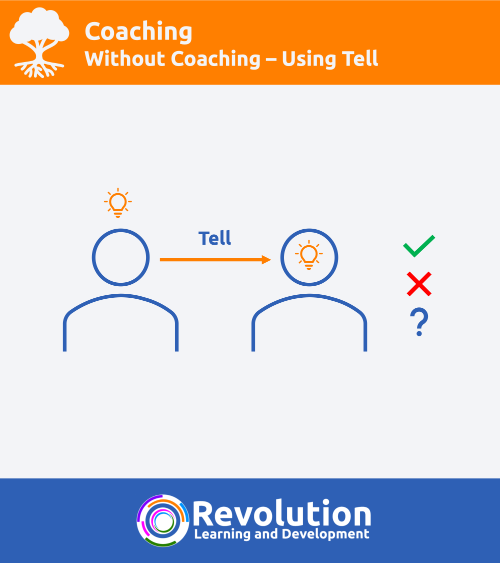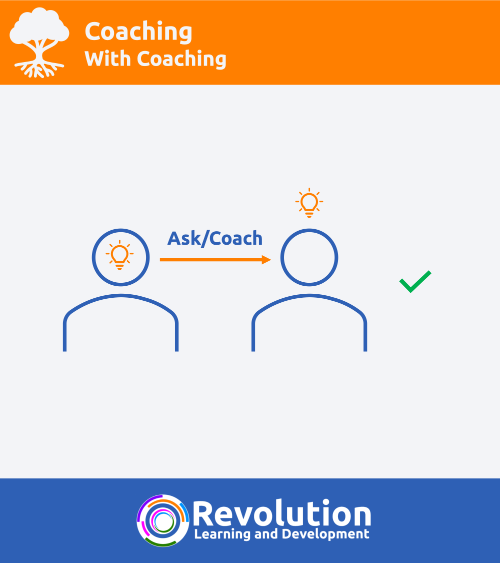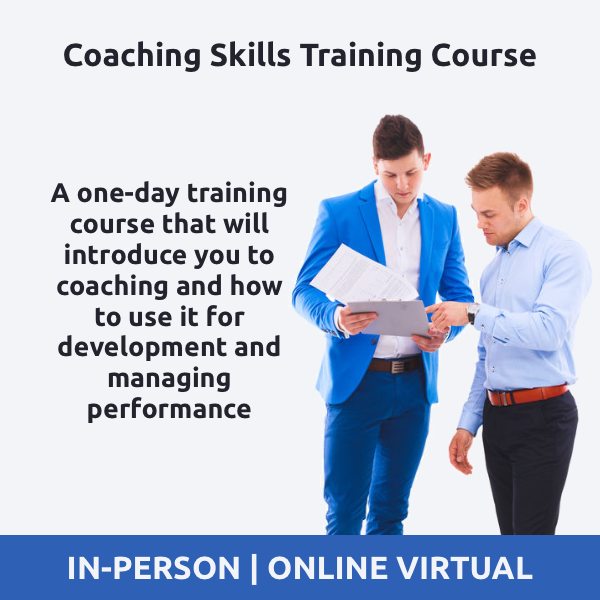Background
What is coaching? Coaching is a skill or collection of skills that can be used to help others achieve their goals. This might be to achieve a future career or life goal. Coaching can also be used to address under-performance as well as a tool to motivate.
Essentially, coaching is helping someone to maximise their potential by unlocking the things that are holding them back or the obstacles that are getting in the way of them succeeding.
A Definition of Coaching
There are many definitions out there to describe what coaching is. They all differ slightly, but all are probably correct. The way we define coaching is:
There are 2 parts to this definition:
- Raising someone else’s awareness – coaching helps someone else to see for themselves that they need to change or improve rather than being told that they have to.
- Need to change or improve – once they are aware, then they see that a change or improvement needs to be made
Coaching and Other Learning Interventions
There are various ways in which we can help someone improve. These are training, buddying/shadowing, coaching and mentoring.
- Training – typically a one-way process where a trainer or a teacher imparts new knowledge and information onto someone with little or no understanding of the subject
- Buddying/Shadowing – watching/observing then copying someone competent in the thing the person needs to learn more about
- Coaching – Improving and building on the foundations of training and buddying/shadowing by helping the person to understand for themselves where they need to improve and how to improve on it
- Mentoring – identifying someone who has been there and done that and is willing to use training and coaching to help the person being coached to get to the next level
What is Coaching?
Here are a few points to help with the question of what is coaching. First, coaching is using a range of questions to guide someone to an outcome. Often, it’s a structured conversation where the coach asks questions to cause the person being coached to think. This process of thinking causes them to self-reflect, therefore raising their own awareness. Once this part of the conversation has been complete, the conversation then moves on to actions. Finally, the coach again uses questions to have the person being coached develop actions or solutions to get to where they need to be.
The role of the coach, normally, is to ask questions. They should offer little guidance or advice as doing so begins to undermine the purpose of coaching.
Why Does Coaching Work?
In a more traditional approach to helping someone get to where they need to be or improve their performance, we may tell them what is wrong and what they need to do to correct it.

- Agree – they agree that this doesn’t seem right, and this is the right way to fix it.
- Disagree – they disagree with the approach and the ideas
- Confused – they don’t understand the idea or see how it can address the issue.
This essentially means we have a one in 3 chance of change.
When we use coaching in the same scenario, the ideas stay with the coach and questions are used instead of telling.

Coaching Structures
To help facilitate a coaching session, you can use a coaching structure or a coaching model. Common models include:
- The GROW Coaching Model – Goals, Reality. Options and Will/Way Forward
- The STEER Coaching Model – Spot, Tailor, Explain, Encourage and Review
- The OSCAR Coaching Model – Outcome, Situation, Choices, Actions and Reviews
It is important that in all structures, most of the questions used are open questions and probing questions. Too many closed questions will not have the impact you want it to have, and coaching will not work.
Further Learning
If you would like to learn more about coaching and the question of what is coaching, take a look at our Coaching Skills Training Course for more details.





